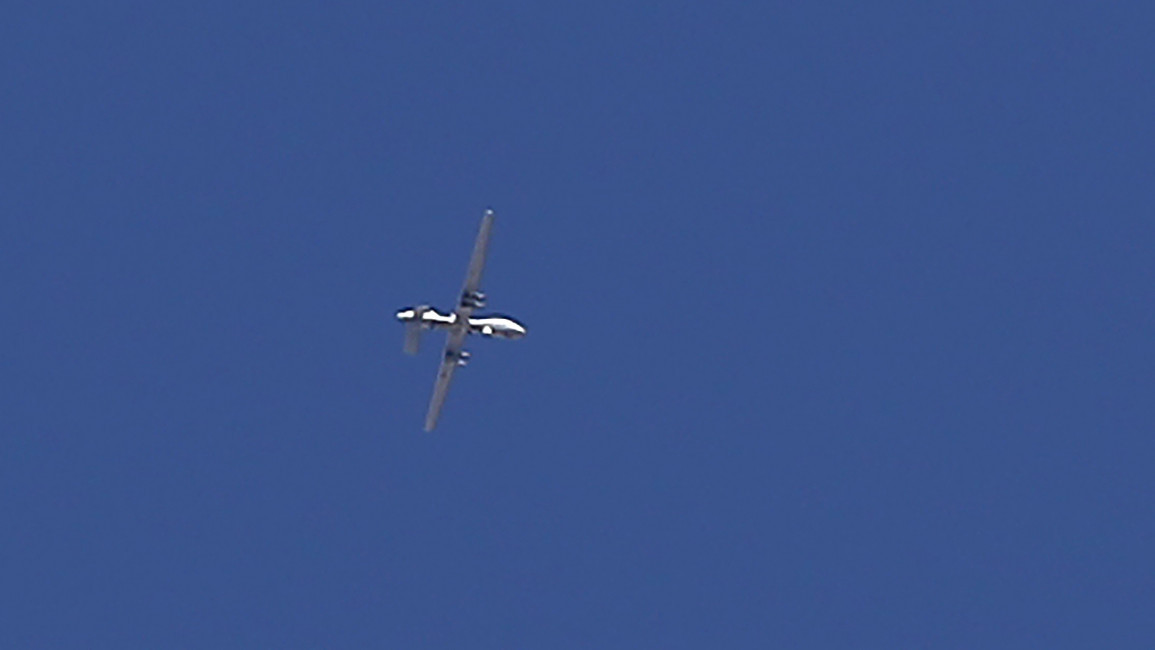US drones remain active over Iraq's airspace despite fragile ceasefire
US drones are maintaining a significant presence in Iraqi airspace despite a temporary cessation of attacks by Iraqi armed factions associated with Tehran, Iraqi security sources said, indicating ongoing US drone movements, particularly over key regions such as Baghdad, Anbar, Erbil, and Babylon.
Since the start of Israel's war on Gaza, Iran-backed militias in Iraq have conducted hundreds of attacks on US forces in both Iraq and Syria over Washington's unwavering support for Tel Aviv in its brutal onslaught on the besieged enclave.
Since 4 February, there have been no reported attacks on US forces in Iraq and Syria.
US drone activity spans Baghdad, the Iraqi capital, as well as provinces like Anbar, Nineveh, Erbil, and northern Babylon, security sources and residents told Al-Araby Al-Jadeed, The New Arab's' Arabic sister website, on condition of unanimity. The sources indicated that the drones are primarily engaged in surveillance missions aimed at safeguarding US forces against potential threats from armed factions.
According to the sources, the US drones are operating at altitudes below those of civilian aircraft, occasionally visible or audible to residents, particularly during nocturnal hours.
"The surveillance drones, launched within Iraq with government coordination, serve a defensive rather than offensive purpose," emphasised an Iraqi military official from the Joint Operations Command in an interview with the website. He underscored that this measure is necessary due to the Iraqi security forces' lack of advanced monitoring technologies to adequately address security challenges facing US forces in Iraq, thus prioritising preemptive attack prevention.
Despite the cessation of attacks for over twenty days, Washington remains cautious, utilising drones for both surveillance and potential targeting purposes. The Sources suggested that these drones are deployed from Harir Airbase in Erbil and Ain al-Assad in Anbar, emphasising American efforts to secure their personnel amid perceived shortcomings in Iraqi security measures.
Washington has some 900 troops in Syria and 2,500 in Iraq as part of an international coalition against the Islamic State group.
The US troops are based in Iraq upon a request from the Iraqi government to assist and advise the Iraqi security forces to combat the IS insurgency.
Three US service members were killed and many wounded on 28 January during an unmanned aerial drone attack on American forces stationed in northeastern Jordan near the Syrian border. Iran-backed groups were blamed for the attack.
The US military launched retaliatory airstrikes against Iranian forces and Tehran-backed militia groups in both Iraq and Syria, killing Abu Baqir al-Saadi, a top commander from the Iran-backed Kataib Hezbollah, in eastern Baghdad on 8 February.
The Iraqi government of Prime Minister Mohammed Shia al-Sudani condemned the US airstrikes, now engaging in negotiations with the US to agree on the future of American and other foreign troops in the country, with Baghdad expecting discussions to lead to a timeline for reducing their presence.
The Iraqi parliament has also drafted a lato withdrawal of the coalition forces from the country, indicating Iraqi security capabilities have improved and the Iraqi government should not renew any agreements necessitating the presence of foreign forces.
"Washington is not reassured by the factions' decision to halt their attacks," another security source in Baghdad told the website, emphasising that the US drones are used for both surveillance and targeting purposes.
Meanwhile, the continued US drone operations pose a challenge to the Iraqi government's efforts to ease tensions with armed factions. Iraqi citizens express concerns and curiosity regarding the reasons behind the sustained aerial surveillance.
Leaders of the Iraqi armed militias and the political entities associated with them mostly avoid discussing these US drone movements and often refrain from commenting on the ceasefire. However, the leader of the Al-Nujaba Movement, Akram al-Kaabi, recently affirmed that the current calm is nothing more than a "temporary tactic to reposition and redeploy," indicating that some "traitors and agents who sold their country, religion, and conscience to the occupier" have provided information about the resistance and its locations. Therefore, it has become necessary to reposition and protect our brothers and change the battle tactics and readiness for forthcoming surprises.
Ali Al-Badawi, a member of the Security and Defense Committee in the Iraqi Parliament, recently emphasised to local Iraqi media the unified stance within parliament concerning the safety and sovereignty of Iraqi airspace.
He disclosed plans to allocate additional funding to the Ministry of Defense in the current fiscal year to finalise agreements to procure advanced air defence systems.



